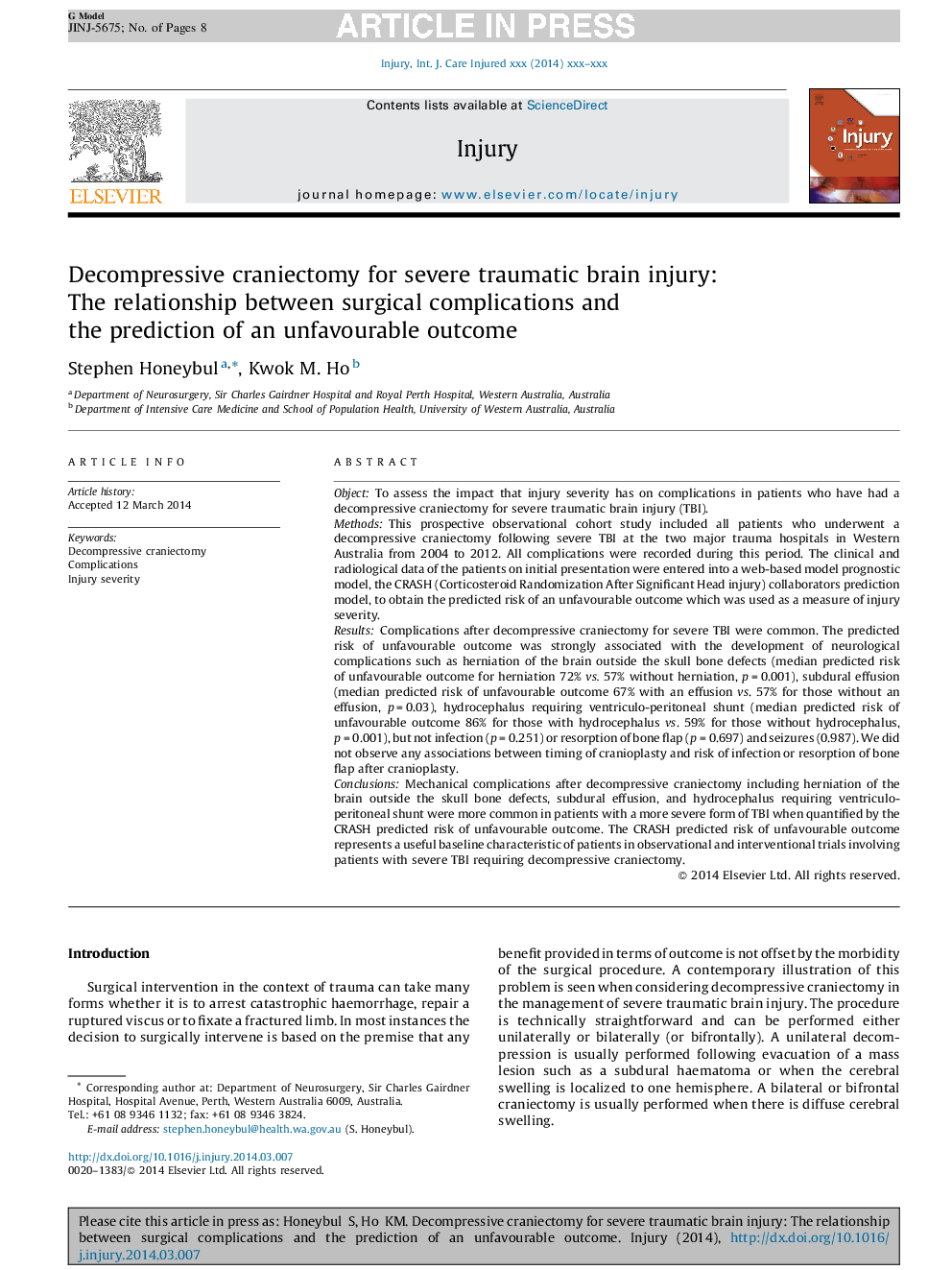| Article ID | Journal | Published Year | Pages | File Type |
|---|---|---|---|---|
| 6083564 | Injury | 2014 | 8 Pages |
Abstract
Mechanical complications after decompressive craniectomy including herniation of the brain outside the skull bone defects, subdural effusion, and hydrocephalus requiring ventriculo-peritoneal shunt were more common in patients with a more severe form of TBI when quantified by the CRASH predicted risk of unfavourable outcome. The CRASH predicted risk of unfavourable outcome represents a useful baseline characteristic of patients in observational and interventional trials involving patients with severe TBI requiring decompressive craniectomy.
Related Topics
Health Sciences
Medicine and Dentistry
Emergency Medicine
Authors
Stephen Honeybul, Kwok M. Ho,
